The Economics and Statistics Division maintains archives of previous publications for accountability purposes, but makes no updates to keep these documents current with the latest data revisions from Statistics Canada. As a result, information in older documents may not be accurate. Please exercise caution when referring to older documents. For the latest information and historical data, please contact the individual listed to the right.
<--- Return to Archive
For additional information relating to this article, please contact:
September 28, 2023JOB VACANCIES, JULY 2023 Statistics Canada released today monthly job vacancy results for July 2023. The data in this article refers to seasonally adjusted data.
Monthly (July 2023 vs June 2023, seasonally adjusted)
Nova Scotia had 17,110 job vacancies in July 2023 with a vacancy rate of 3.9%. Nova Scotia job vacancies were at their lowest level since July 2021.
Canadian employers were actively recruiting for 701,305 positions in July with a vacancy rate of 3.9%. For Canada, job vacancies in July 2023 were at their lowest level since May 2021. The highest vacancy rates were reported in Quebec while the lowest vacancy rate was reported in New Brunswick.
Job vacancy rates increased 0.1 percentage points in Nova Scotia but declined 0.3 percentage points nationally compared with June 2023. Job vacancy rates declined in seven provinces and increased in three provinces compared to the previous month.


When compared to June 2023, the number of job vacancies in Nova Scotia declined 1.6% or 275 jobs. National job vacancies declined 5.8% or 43,065 jobs. Over the same period, vacancies decreased in all provinces with the exception of Newfoundland and Labrador and Quebec. The largest decline was in Prince Edward Island.
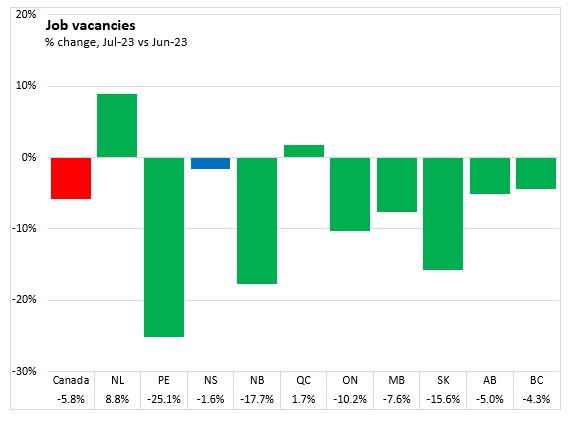
Year-over-year (July 2023 vs July 2022)
When compared to July 2022, job vacancy rate in Nova Scotia declined 1.1 percentage points. Nationally, job vacancy rate declined from 5.5% to 3.9%. Job vacancy rates declined in all provinces when compared to a year earlier.

When compared to July 2022, the number of job vacancies in Nova Scotia declined 24.1% or 5,425 vacancies. National job vacancies declined 28.1% or 273,685 vacant jobs. All provinces declined in the number of vacancies over the twelve month period. In percentage terms, Ontario declined the most. The smallest declines were in Saskatchewan and Newfoundland and Labrador.
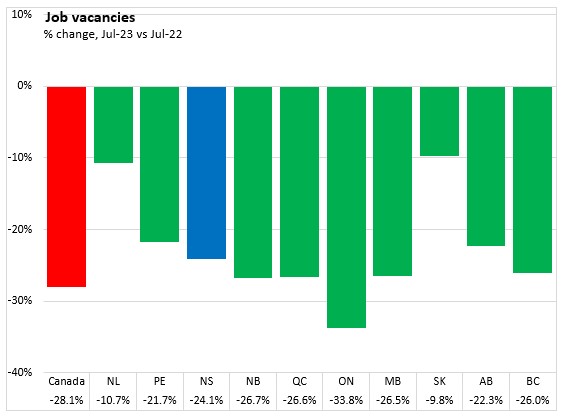
Trend
Nationally, job vacancy rates peaked in March-May 2022 and have steadily declined since. Nova Scotia's job vacancy rates trended up for most of 2021 and early 2022 before declining through early 2023. The number of job vacancies in Nova Scotia peaked in May 2022 at 23,105 and slowly declined to 18,620 in March 2023, picked up to 20,640 in May 2023 before declining to 17,110 in July 2023.
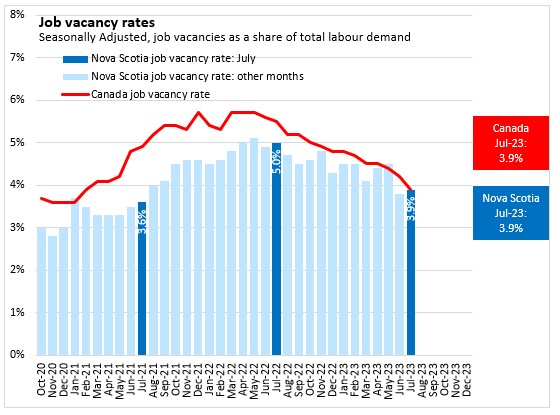
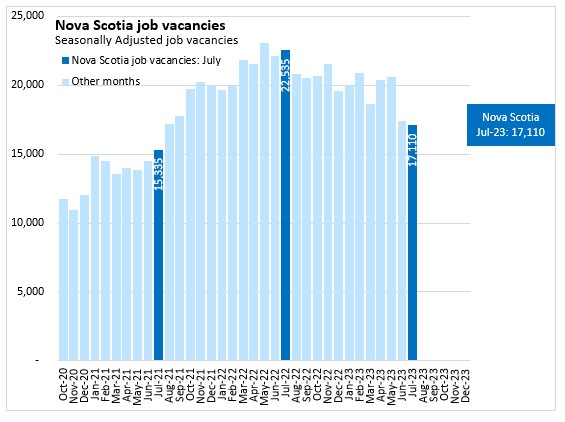
Canada job vacancy rate and job vacancies by industry, July 2023
Nationally, the accommodation and food services sector and health care and social assistance had the highest job vacancy rates (both at 5.7%). The job vacancy rate in accommodation and food services was at its lowest level since January 2020.
After accommodation and food services, and health care and social assistance, the next highest job vacancy rates in Canada were reported in personal, repair services, construction, and admin, support and waste management. The lowest vacancy rates were in education and management of companies.
Health care and social assistance had the highest number of vacancies at 139,230 in July. The number of vacancies declined in health care and social assistance while the job vacancy rate (5.7%) decreased compared to July 2022.
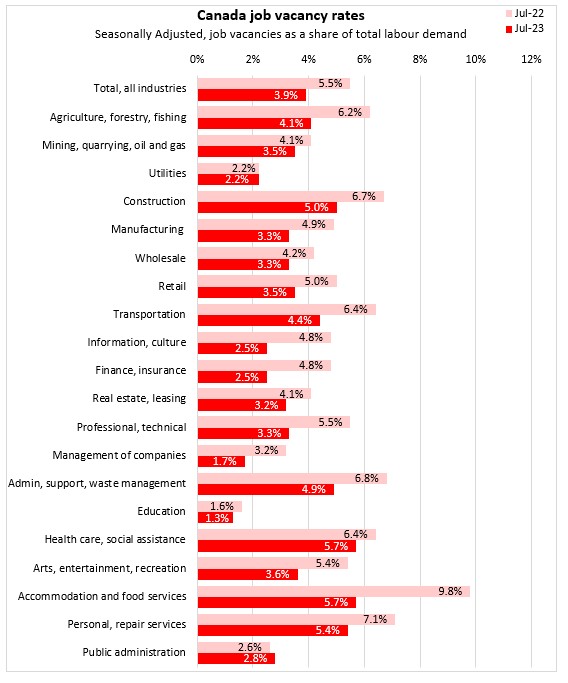
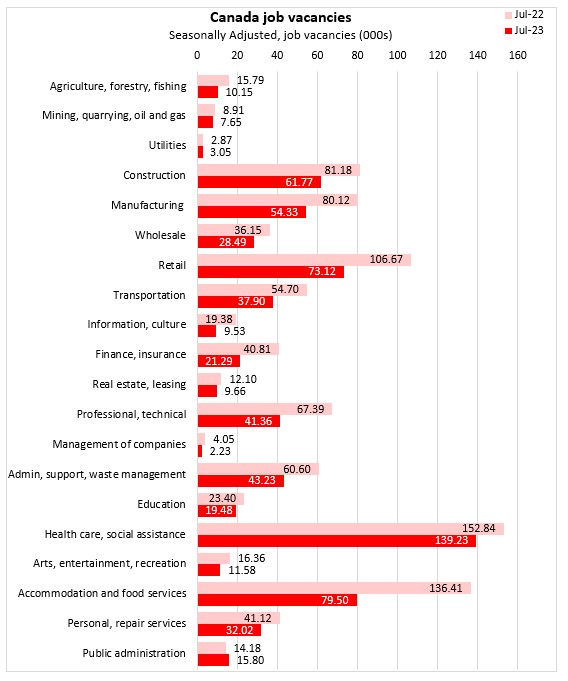
Notes: The job vacancy rate is the percentage of job positions (both filled and vacant) that are vacant. A higher job vacancy rate indicates a tighter labour market where it is more difficult for employers to find suitable candidates for the positions offered. A lower job vacancy rate signals labour market slack and potentially more job seekers competing for each vacant position.
Information on monthly job vacancies will continue in future Statistics Canada releases, and a more detailed analysis will be released with quarterly estimates from the Job Vacancy and Wage Survey.
Sources: Statistics Canada, Table 14-10-0432-01 Job vacancies, payroll employees, and job vacancy rate by provinces and territories, monthly, adjusted for seasonality, Table 14-10-0406-01 Job vacancies, payroll employees, and job vacancy rate by industry sector, monthly, adjusted for seasonality
<--- Return to Archive